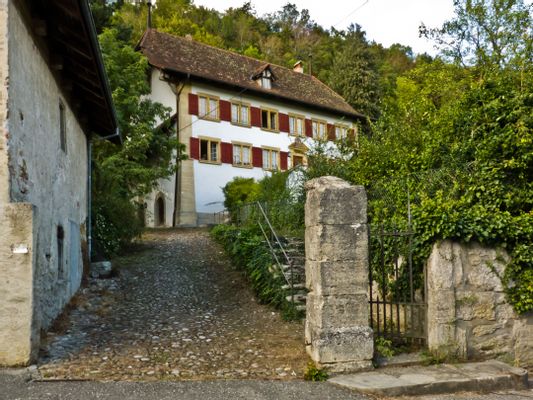This medieval Swiss city sits on a rocky outcrop above the Sarine River. Its bilingual culture, Gothic architecture, and student population create a lively atmosphere rich in history.
Fribourg, a Swiss city straddling the French-German language border, is known for its well-preserved medieval Old Town perched above the Sarine River. Gothic spires and 15th-century buildings create a distinctive profile against the sky. The city's bilingual character influences its architecture, food, and daily life. Visitors can explore St. Nicholas Cathedral, wander through museums displaying local art and history, or enjoy the lively atmosphere brought by the large student population.
Exploring Fribourg's Old Town
Fribourg's Old Town has over 200 Gothic facades dating to the 15th century. As you walk the narrow alleys, you'll come across 11 historic fountains, each representing a different theme such as faithfulness or bravery. The Old Town sits on a rocky promontory with the Sarine River flowing on three sides. For expansive views, climb up to the Loreto Chapel or take the funicular from the lower Neuveville district to the upper town.
St. Nicholas Cathedral
St. Nicholas Cathedral dominates Fribourg's skyline. Construction began in 1283 and continued for several centuries. Inside, you'll see high vaulted ceilings and stained glass windows created by Polish artist Józef Mehoffer in the early 20th century. You can climb 368 steps to the top of the 74-meter tower for views over the city and surrounding countryside. The cathedral also houses a 16th century organ with over 7,800 pipes.
Bilingual Culture
Fribourg's location on the border between French and German-speaking Switzerland results in a bilingual character. You'll see street signs in both languages and hear a mix of French and Swiss German spoken. This cultural blend influences the local cuisine - try Fribourg specialties like fondue moitié-moitié (half Gruyère, half Vacherin cheese) or meringues with double cream from the nearby Gruyère region. The University of Fribourg draws students from various backgrounds, contributing to the city's international atmosphere.
Museums and Art
Several museums in Fribourg highlight different aspects of art and history. At the Espace Jean Tinguely - Niki de Saint Phalle, you can see Tinguely's moving sculptures and Saint Phalle's colorful creations. These 20th century artists had strong connections to the region. The Museum of Art and History, located in the Renaissance-era Ratzé Palace, contains artifacts from medieval Fribourg and artworks from the 12th to 19th centuries. Families might enjoy a visit to the Natural History Museum with its educational exhibits on local flora and fauna.
Getting Around
Trains connect Fribourg to other Swiss cities frequently. From the main station, you can reach most Old Town sights on foot, though some areas involve steep climbs. City buses help you move between upper and lower parts of town. For a unique experience, ride the funicular connecting the Neuveville district to the upper town - it runs on wastewater and is the last of its kind in Switzerland. Fribourg is a good starting point for exploring the surrounding Sarine district and nearby Gruyères region.




















